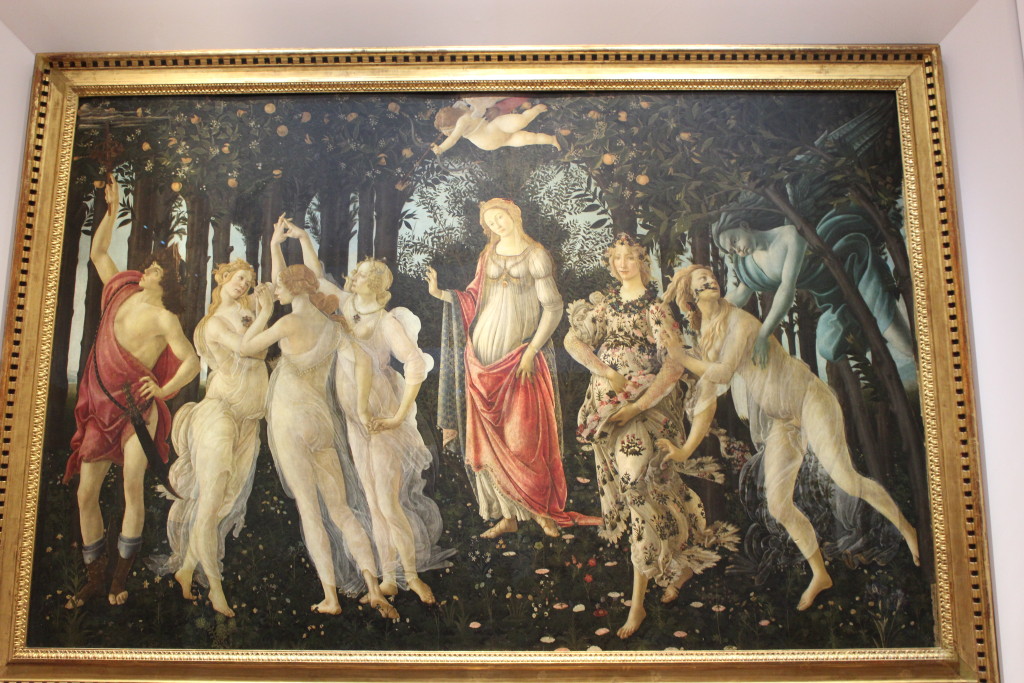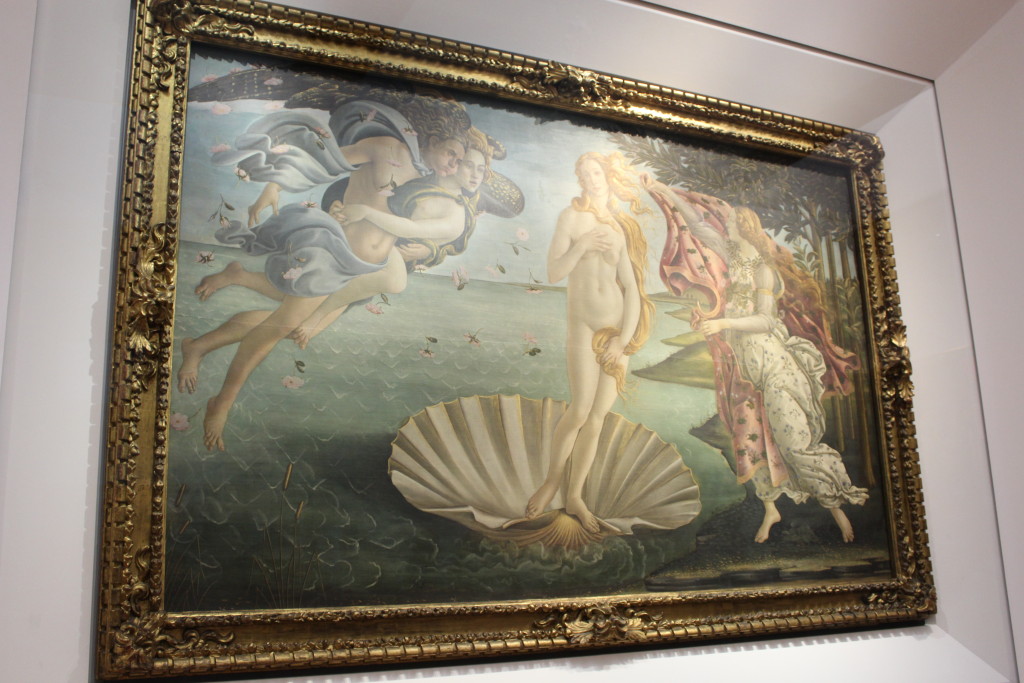Alessandro di Mariano di Vanni Filipepi, who is better known as Sandro Botticelli, was born in 1445 in Florence, Italy during the Italian Renaissance. Sandro’s older brother Giovanni, who was nicknamed Botticello, is credited with giving Sandro the nickname Botticelli, which means “Little Barrel.” Botticelli initially started training as a goldsmith under the guidance of his brother Antonio. By 1462, Botticelli began an apprenticeship as a painter in the studio of Fra Filippo Lippi in Florence. Botticelli’s style was influenced by Lippi and other artists like Andrea del Verrocchio who emphasized painting the details of the human form in motion.
Botticelli’s Strong Start
 When Botticelli was a teenager, he was offered his own studio inside the Medici Palace. He befriended Lorenzo de Medici, who was a strong and influential patron of the arts. By 1470, Botticelli acquired his own studio, and from 1470 through 1490, he reached the highest point of artistic recognition and financial success while the Medici family continued their patronage of his works. His works became so influential that the Papacy invited Botticelli to come to Rome to decorate a portion of the Sistine Chapel. This invitation confirmed that Botticelli’s art was held in high regard as only the Renaissance’s greatest artists, like Michelangelo, were invited to decorate the Sistine Chapel.
When Botticelli was a teenager, he was offered his own studio inside the Medici Palace. He befriended Lorenzo de Medici, who was a strong and influential patron of the arts. By 1470, Botticelli acquired his own studio, and from 1470 through 1490, he reached the highest point of artistic recognition and financial success while the Medici family continued their patronage of his works. His works became so influential that the Papacy invited Botticelli to come to Rome to decorate a portion of the Sistine Chapel. This invitation confirmed that Botticelli’s art was held in high regard as only the Renaissance’s greatest artists, like Michelangelo, were invited to decorate the Sistine Chapel.
Botticelli’s Famous Use of Popular Florentine Style
Botticelli was heavily influenced by the style that was popular in Florence, which placed an emphasis on the human form, changes in muscular appearance, and physical action. He was taught this style by Lippi, and Botticelli used this style throughout most of his paintings. For instance, his most famous work, The Birth of Venus, features Venus in the nude. This was rare at a time when Christian-themed artwork was the norm, and nudity was almost never portrayed. The painting also depicts motion with Venus’s hair being blown by the Zephyrs, waves of water breaking, and clothing being blown by a breeze. The Birth of Venus is currently displayed at the Uffizi Gallery in Florence.
Once Forgotten, Botticelli Was Rediscovered
After 1490, groundbreaking changes in the Italian Renaissance art scene started to take place with the arrival of Leonardo da Vinci, Raphael and Michelangelo. Botticelli’s artwork was viewed as being old-fashioned, and he was unable to keep up with the rapid artistic changes. He died impoverished at the age of 65 in 1510, and the public barely took notice of his death. It wasn’t until the 19th century when artists in England rediscovered Botticelli’s paintings due to their interest in pre-Raphaelite Renaissance art and recognized him for being one of the great artists of the Renaissance. Today, Botticelli’s artwork frequently appears at auctions selling for millions of dollars.
Botticelli now has the respect of the art world that he did not get late in his life. He popularized depicting the human form, which inspired other artists to expand on their own expression of the human body and emotions. His contributions to the Italian Renaissance can no longer be overlooked.

